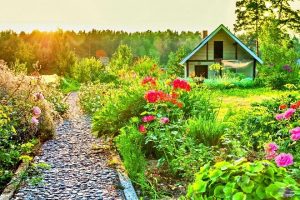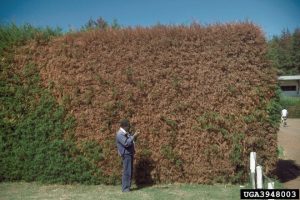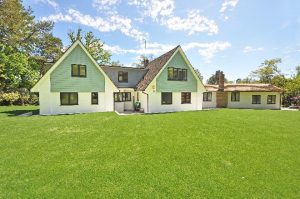
Heather N. Kolich, ANR Agent, UGA Extension Forsyth County
Landscapes have several things in common with financial portfolios. Both are investments in the future; both require time to yield results; and both benefit from variety. Financial experts recommend investing in a variety of different asset classes to help protect the overall portfolio when one type of asset suffers a setback. In the landscape, investing in a broad spectrum of plant species lowers the risk of loss if disease or pests damage a particular species. Biodiversity in landscape plants extends investment benefits to other species, too.
Risks of monoculture: History lessons
Uniformity is a goal of many HOAs. When the same few plants dominate every yard, however, we create community risk. My husband remembers streets lined with ash trees from his childhood. In 2002, an invasive insect, emerald ash borer (EAB), was discovered in his home state. Since then, EAB has spread to 35 states and killed tens of millions of ash trees in forests, suburbs, and cities, including thousands of street trees from Michigan to Georgia.

Red tip photinias were all the rage for living walls in the 1980s. Then a leaf spot disease defoliated and killed the closely planted shrubs yard by yard. The loss of those plants opened the gates for a new screening plant: Leyland cypress. Now these ubiquitous trees are suffering problems of their own: a short lifespan of 12-20 years and a suite of fungal diseases that are unrealistic to control large trees. Branches turn brown and trees die, leaving homeowners distressed about losing the planting and their privacy, as well as the cost of removing several dead trees.
Benefits of biodiversity: Multiplication of nature

Investing in a variety of landscape plants adds layers of richness that provoke our senses. Fragrant blossoms can stimulate memories. Swaying grasses add movement and sound. Contrasting textures tempt fingers to reach out and touch leaves, trunks, and flowers. Including space for culinary herbs and perennial fruits satisfies the sense of taste, too.
A rich diversity of plants also sustains pollinators, birds, and wildlife. Flowers provide pollen and nectar for hummingbirds and our numerous native bees. Plants that produce fruit, berries, nuts, or seeds attract many species of migratory songbirds. Trees and large shrubs support nests and offer small animals hiding places from predators. Butterflies and moths need particular plants for egg laying because the larvae of some species feed only on the leaves of specific plants. Host plants are adapted to caterpillar feeding and recover once the caterpillar moves into the pupa stage.
Expanding the palette: Additions and subtractions
Adding different types of plants increases landscape biodiversity, but reduction and replacement are part of the formula, too. Native plants are a good starting choice for creating a thriving ecosystem. Consider these give and takes:
- Add weeping and waving native grasses, such as fall-blooming pink muhly grass, and reduce turfgrass to serve a specific purpose, like paths and play areas.
- Clear invasive plants like privet and Japanese honeysuckle out of wooded areas and plant native, shade-tolerant ferns and shrubs.
- Replace marginal shrubs like Indian hawthorn with native rabbiteye blueberries. They flower in the spring and produce edible berries.
- Phase out the Leyland cypress screen with a mix of evergreen and flowering natives, like American holly, Southern magnolia, and arrowwood viburnum.
The Bottom Line

Investing in a biodiverse landscape is good for the environment and for your bottom line. Reducing turfgrass area reduces the costs of inputs, such as water, fertilizer, and herbicides. Properly placed trees and shrubs can reduce energy costs. And several studies indicate that a well-designed, mature landscape adds 5-15 percent to the resale price of a home.